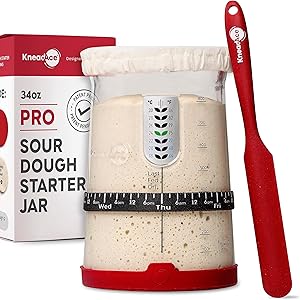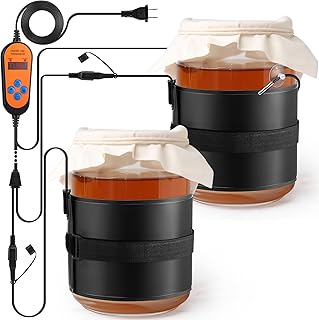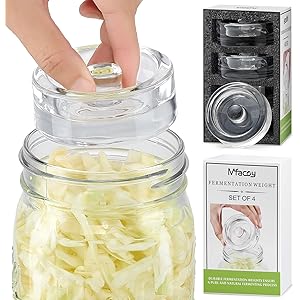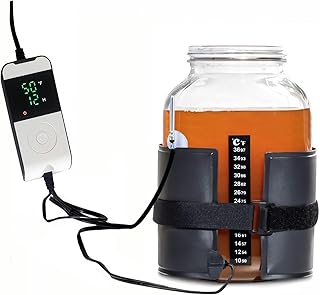The Ultimate Guide to Kombucha Second Fermentation Duration: Timing, Techniques, and Tips
Kombucha has emerged as a favorite among health enthusiasts and beverage connoisseurs alike, celebrated for its effervescent taste and numerous health benefits. One of the essential stages in the brewing process is the second fermentation, which not only enhances the flavor and carbonation of the drink but also determines its overall quality and character. In this comprehensive guide, we will explore the intricacies of the second fermentation duration, examining how long you should let your kombucha ferment, the factors that influence this timing, and practical tips to achieve the perfect brew.
Understanding Kombucha and Its Fermentation Process
What is Kombucha?
Kombucha is a fermented tea beverage made by combining sweetened tea with a SCOBY (Symbiotic Culture of Bacteria and Yeast). This mixture undergoes two fermentation stages:
- First Fermentation (Primary Fermentation): In this stage, the sweetened tea is fermented for 7 to 14 days. The yeast in the SCOBY consumes the sugar, producing alcohol, carbon dioxide, and various organic acids. This process results in a tangy, slightly effervescent tea.
- Second Fermentation: After the first fermentation, the kombucha is bottled and often flavored with fruits, herbs, or spices. This second fermentation lasts from a few days to a week, allowing for additional carbonation and flavor development.
Why Second Fermentation Matters
The second fermentation is a crucial step in the kombucha brewing process. It allows for:
- Flavor Enhancement: Adding ingredients like fruits or herbs during the second fermentation infuses the kombucha with new flavors, creating unique combinations that appeal to different palates.
- Increased Carbonation: The continuation of fermentation produces additional carbon dioxide, resulting in a fizzy drink that many enjoy.
- Probiotic Development: The second fermentation helps cultivate beneficial probiotics, enhancing the health benefits associated with consuming kombucha.
Factors Influencing Second Fermentation Duration
The duration of the second fermentation can vary based on several factors, each of which can significantly impact the final product.
1. Desired Level of Fizziness
The amount of carbonation you desire in your kombucha will dictate how long you allow it to ferment. Longer fermentation times typically result in higher carbonation levels. If you prefer a mildly fizzy drink, a shorter duration of 2 to 3 days may suffice. For a more pronounced fizziness, consider extending the fermentation to 5 to 7 days.
2. Temperature
The temperature of the environment where your kombucha ferments plays a crucial role in the fermentation process. Warmer temperatures (around 75°F to 85°F or 24°C to 29°C) can accelerate fermentation, leading to faster carbonation and flavor development. Conversely, cooler temperatures (below 70°F or 21°C) may slow down the process, resulting in longer fermentation times. Monitor the temperature of your brewing area to achieve the desired fermentation duration.
3. Ingredients Used
The type and quantity of ingredients you add during the second fermentation can influence how long you should let your kombucha ferment. Ingredients with higher sugar content, like ripe fruits or sweet syrups, can increase fermentation speed, resulting in higher carbonation levels. On the other hand, adding less sugary ingredients may require a longer fermentation time to achieve the desired flavor and fizziness.
4. Bottle Type and Sealing
The type of bottles you use for second fermentation can also affect the duration. Glass bottles with airtight seals are preferred, as they trap carbon dioxide, leading to increased pressure and carbonation. If your bottles are not sealed properly, carbon dioxide may escape, resulting in lower carbonation levels and potentially requiring longer fermentation times to achieve the desired fizz.
5. Personal Preference
Ultimately, the best fermentation duration for your kombucha will depend on your personal taste preferences. Experimenting with different fermentation times will help you discover the perfect balance of flavor, carbonation, and sweetness that suits your palate.
Recommended Second Fermentation Durations
General Guidelines
As a general rule of thumb, here are some recommended durations for second fermentation:
- 2 to 3 Days: Ideal for those who prefer a mildly fizzy and less acidic kombucha. This timeframe allows for subtle flavor enhancements without overwhelming carbonation.
- 4 to 5 Days: This duration strikes a balance between fizziness and flavor complexity. You can expect moderate carbonation and a more pronounced taste.
- 6 to 7 Days: For enthusiasts who enjoy a robustly fizzy kombucha with pronounced flavors, allowing a full week for second fermentation is ideal. Be cautious, as this may also increase acidity.
A Step-by-Step Guide to Second Fermentation
- Prepare Your Ingredients: Select the flavors you want to add to your kombucha. This could include fruits (e.g., berries, citrus), herbs (e.g., mint, basil), or spices (e.g., ginger, cinnamon).
- Bottling: Use clean, sanitized bottles for bottling your kombucha. Pour the first fermentation into the bottles, leaving some headspace to accommodate the production of carbon dioxide.
- Add Flavors: Add your chosen ingredients directly into the bottles. Use a tablespoon of sugar or fruit per bottle to enhance fermentation and flavor.
- Seal the Bottles: Ensure the bottles are sealed tightly to trap carbon dioxide. If using flip-top bottles, ensure they are closed securely.
- Fermentation Period: Allow the bottles to sit at room temperature, away from direct sunlight, for the desired duration. Check the kombucha daily by releasing some pressure from the bottles to prevent over-carbonation.
- Taste Testing: After a few days, start tasting your kombucha to gauge flavor and fizziness. Once it reaches your desired taste, it’s ready to be refrigerated.
- Refrigeration: Move the bottles to the refrigerator to slow down fermentation. This will preserve the flavor and carbonation levels you’ve achieved.
Troubleshooting Common Issues
1. Too Much Fizziness
If your kombucha becomes overly fizzy, it may be due to extended fermentation. To remedy this, try shortening the second fermentation duration in future batches, ensuring to monitor the carbonation levels closely.
2. Off Flavors
If you notice off flavors in your kombucha, it could be due to prolonged fermentation or the use of overly ripe or spoiled ingredients. Ensure that you are using fresh, high-quality ingredients and consider adjusting your fermentation time.
3. Flat Kombucha
If your kombucha is flat after second fermentation, this may indicate insufficient fermentation time or a lack of added sugars. Experiment with increasing the duration or adding more flavorful ingredients to boost carbonation.
4. Overcarbonation
In rare cases, kombucha can become dangerously over-carbonated, leading to bottle explosions. To prevent this, regularly check the carbonation levels by releasing some pressure from the bottles. If you notice excessive fizziness, refrigerate the kombucha immediately.
Safety Precautions
When fermenting kombucha, safety is paramount. Here are some precautions to keep in mind:
- Sanitation: Always ensure that your brewing equipment and bottles are properly sanitized to prevent contamination.
- Monitoring: Keep an eye on the fermentation process. If you notice any unusual smells, colors, or mold growth, it’s best to discard the batch.
- Avoiding Alcohol Overproduction: Be aware that prolonged fermentation can lead to higher alcohol levels. If you are concerned about alcohol content, limit fermentation time and monitor the ingredients used.
Final Thoughts
The second fermentation of kombucha is an art that balances flavor, carbonation, and personal preference. Understanding the factors that influence fermentation duration can help you achieve a delicious and refreshing beverage tailored to your taste. By experimenting with different ingredients and fermentation times, you can unlock the full potential of your kombucha brewing experience.
As you embark on your kombucha brewing journey, remember that practice makes perfect. With patience and a little creativity, you’ll be able to create unique and flavorful kombucha that you and your loved ones can enjoy. Cheers to your kombucha adventures!
MFacoy 4-Pack of Fermentation Glass Weights with Easy Grip Handle for Great Wide Mouth Canning Mason Jars, Pickling Sourkrout Kraut Glass Weight Fermentation Kit with Easy Grip Handle, Dishwasher Safe
$12.99 (as of 02/10/2025 15:41 GMT -03:00 - More infoProduct prices and availability are accurate as of the date/time indicated and are subject to change. Any price and availability information displayed on [relevant Amazon Site(s), as applicable] at the time of purchase will apply to the purchase of this product.)
Receive tips, news and exclusive offers! Sign up for our newsletter now!










